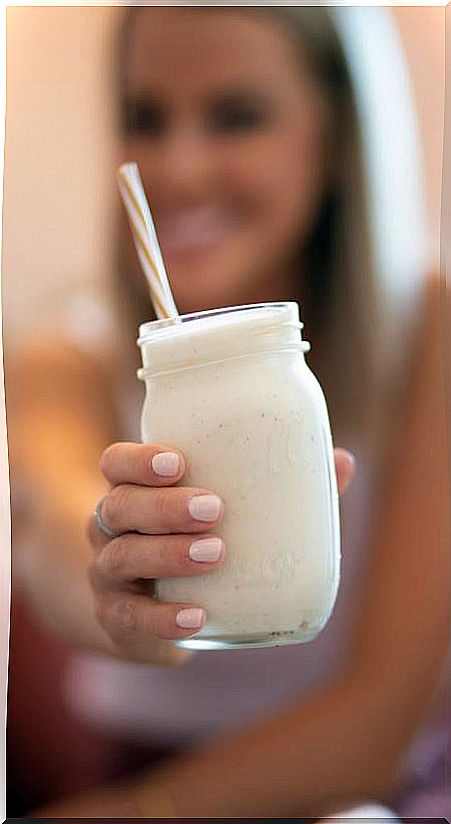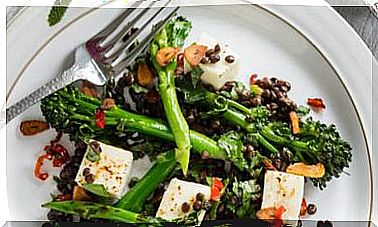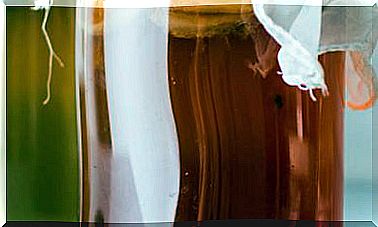4 Different And Healthy Vegetable Milks
In shops you can find quite a few vegetable milks, however there are some that are not produced industrially for different reasons, but that can be made at home and are very rich and nutritious.

We have become accustomed to soy, oat or almond milks, but vegetable milks can be made with a wide variety of seeds, nuts, cereals and legumes, which can be used as an alternative to dairy products in many preparations, from coffee with milk to pastry products.
You can buy many ready-to-use milks, but self-made non-dairy milk will always be cheaper and more environmentally friendly.
When preparing vegetable drinks, pay attention to the respective soaking times of the seeds, so that unhealthy phytic acid and other anti-nutrients are broken down before consumption.
5 different vegetable drinks
1. Hemp milk
Homemade hemp milk stands out for its content of omega-3 fatty acids. It is also rich in magnesium, which prevents muscle cramps and migraines, and in iron, whose contribution is especially important for women of childbearing age from adolescence.
It is not necessary to soak the hemp seeds, so it can be prepared on the spot. Hemp milk has a pleasant nutty flavor and is great for cooking and baking.
Ingredients (for a liter of milk):
- 100 g of organic unshelled hemp seeds
- Some gauze pads, a very fine strainer or a bag to filter vegetable milks
- Optional sugar or an alternative sweetener (for example, 5 pitted dates)
Elaboration:
- Finely crush the hemp seeds in a powerful mixer so that the ingredients dissolve better later.
- Pour in 500 ml of water and mix for a few minutes.
- Strain with thin gauze or a bag for vegetable milks and squeeze well.
- Put the liquid back in the blender, add the dates and mix again.
- Finally, add 500 ml of water to the milk, otherwise it will have a very intense flavor.
You can drink the milk as is, with cocoa, or use it for baking or cooking. It can be kept in the refrigerator for up to a week.
The solid remains of the seeds can be used for delicious hemp creams, as a complement to muesli or for baking.
2. Lupine milk
Sweet lupine is very rich in protein and contains minerals such as magnesium, iron, calcium and potassium. It contains around 40% protein, a proportion even higher than that of soybeans.
Homemade lupine milk is very low in fat and does not contain flatulent ingredients like other legumes. It is recommended to blend until obtaining a very fine cream.
Ingredients (for a liter of milk):
- 200 g sweet lupine seeds
- 1 l of water, plus water for soaking
- 1 pinch of salt
- Some gauze pads, a strainer or a bag of non-dairy milks
Elaboration:
- Soak the lupine seeds for 24 hours. You can soak them for up to two days to make the flavor softer (change the water twice a day).
- Pour in the soaking water, simmer the drained seeds with fresh water and the lid closed for about an hour over medium heat.
- Strain the lupins, rinse them and add a liter of fresh water. Grind them until you get a uniform dough.
- Filter the dough through a bag of non-dairy milks or a strainer.
Homemade lupine milk can be kept in the refrigerator for about three to four days. It is suitable for both coffee and muesli or to drink alone.
3. Millet milk
Not only does homemade millet milk contain many vitamins and minerals (especially iron), it is gluten-free and low in allergy-causing substances.
Millet milk has a strong flavor of its own, reminiscent of rice.
Ingredients (for 1 liter of milk):
- 100 g millet
- 1.2 l of water
- 1 pot
- 1 strainer
- 1 arm mixer
- Some gauze or a bag of vegetable milk
Elaboration:
- Soak the millet for several hours, preferably overnight, in about 200 ml of cold water.
- Remove the soaking water, bring the grains to a boil in a saucepan with a liter of water and, depending on the type of millet and soaking time, simmer for about 15 minutes until they are cooked.
- Let cool and beat it together with the cooking water with the arm mixer. Blend briefly, otherwise the milk will become viscous.
- Pour the liquid through a strainer lined with cheesecloth or the bag of non-dairy milks into a bowl. (Squeeze the residues well).
- Depending on your taste, you can add a sweetener or a spice to the milk.
- Store bottled millet milk in the refrigerator. It can be kept for several days.
4. Pea milk
The yellow pea milk provides a lot of protein and also does not contain gluten, so it is also suitable for celiacs.
Ingredients (for a liter of milk):
- 120 g of dried yellow peas (available in organic supermarkets or online)
- 1 liter of water, plus water for soaking
- 2-3 dates (optional)
- 1 pinch of salt (optional)
- 1 teaspoon powdered lecithin (as a natural emulsifier, ensures that pea milk does not separate so quickly)
Elaboration:
- Put the peas in a bowl, cover them with cold water and let them soak for about 12 hours. The soaking time contributes to better digestibility.
- Pour the soaked peas into a saucepan with fresh water. Cook for 20-30 minutes.
- Drain the cooked peas through a colander, let them cool, and put them in a blender along with a liter of fresh water and any optional ingredients. Blend everything until you get a homogeneous dough.
- If necessary, drain through a milk bag. Unlike other types of plant-based milk, pea milk becomes very liquid or watery through additional filtering. If you want to enjoy it in muesli or use it for cooking, you can do without filtering.









